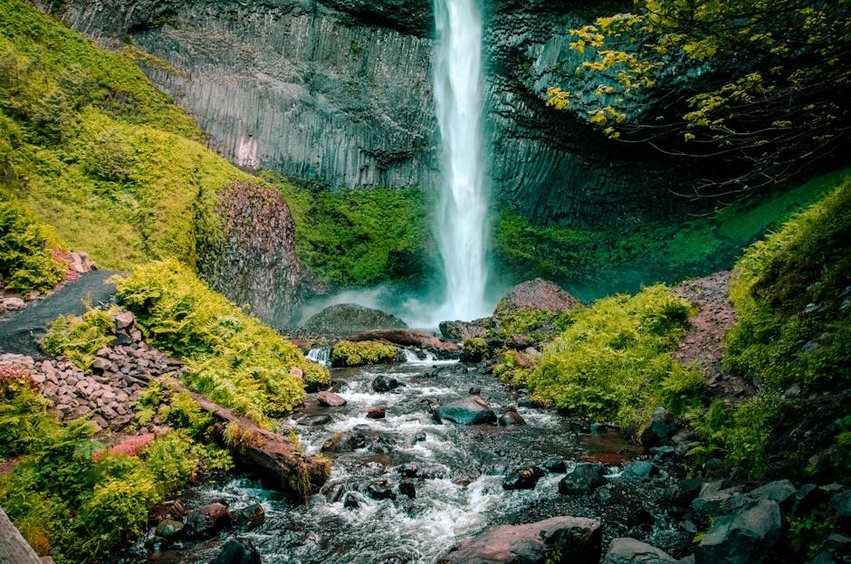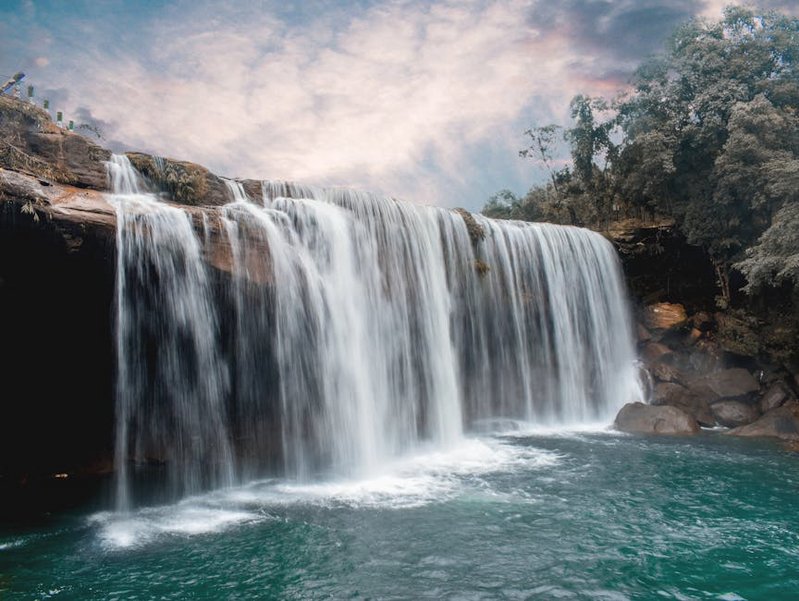Guyana Kaieteur Falls Wilderness: An Epic Rainforest Adventure
Exploring the Guyana Kaieteur Falls Wilderness immerses you in one of South America’s most pristine natural environments, where the world’s largest single-drop waterfall plunges 741 feet into a lush rainforest gorge. This remote destination combines dramatic landscapes with rich biodiversity, offering opportunities to spot golden frogs, giant otters, and hundreds of bird species across the Potaro Plateau. Your journey through this guide covers essential planning details, seasonal considerations, and insider tips for navigating Guyana’s protected wilderness areas successfully.
Essential Destination Information
Kaieteur Falls anchors Guyana’s protected area network within the larger Amazon biome, creating a unique ecosystem where the Potaro River cascades over a sandstone cliff. The falls flow at an average rate of 23,400 cubic feet per second year-round, though volume increases significantly during the April-August rainy season. This consistent flow sustains the surrounding rainforest’s extraordinary biodiversity across 627 square miles of protected wilderness.
Guyana’s commitment to conservation dates to 1929 when Kaieteur became a national park, predating most environmental protection efforts in South America. The falls derive their name from local Patamona legends about Chief Kai, who sacrificed himself by canoeing over the edge to appease the Great Spirit Makonaima. Today, this UNESCO World Heritage Site candidate remains one of the continent’s least commercialized major waterfalls, accessible primarily through guided expeditions.
Geographic and Climate Details
Understanding the region’s geography helps with practical preparation for your wilderness adventure.
- The falls sit within the Pakaraima Mountains at approximately 1,200 feet elevation, creating a tropical montane climate with temperatures ranging from 70-90°F (21-32°C) throughout the year.
- Heavy rainfall occurs between May-August with 8-12 inches monthly, while the drier December-March period still receives 4-6 inches, keeping the rainforest perpetually green and humid.
- Access requires traveling 160 miles south from Georgetown via small aircraft or multi-day river journeys, with no road connections to this remote protected area.
- Budget travelers can manage $800-1,200 by joining group tours from Georgetown, camping instead of using lodges, and packing their own food for the 3-4 day minimum visit recommended.
- Mid-range options at $1,500-2,200 include comfortable lodge accommodations, licensed guides for day hikes, and charter flights with reliable operators like Trans Guyana Airways.
- Luxury expeditions costing $2,500-4,000 feature private guides, extended wilderness treks, and stays at eco-lodges with modern amenities while maintaining low environmental impact.
- Guyana Tourism Authority
- World Wildlife Fund Amazon Program
Conservation Significance
Kaieteur National Park protects numerous endemic species found nowhere else on Earth, including the tiny golden rocket frog that inhabits the waterfall’s spray zone. The surrounding wilderness contains over 400 bird species, making it a premier destination for ornithologists seeking Guianan cock-of-the-rock and scarlet macaws. Strict visitor guidelines help minimize human impact while supporting scientific research and indigenous community partnerships.
Wildlife Viewing Opportunities
Early morning hours provide the best wildlife viewing conditions around the falls, when temperatures remain comfortable and animal activity peaks. Bring binoculars for observing capuchin monkeys, three-toed sloths, and the spectacular Guianan red howler monkeys that inhabit the canopy. Licensed guides can help spot more elusive species like jaguars and giant anteaters during extended wilderness treks beyond the main viewpoint areas.

Alt: “kaieteur-falls-rainforest-viewpoint-guyana-wilderness”
Planning Your Guyana Kaieteur Falls Wilderness Trip
Organizing your Guyana Kaieteur Falls Wilderness adventure requires careful timing and logistical preparation, as this remote destination lacks the infrastructure of more developed tourist sites. The optimal visiting window falls during the drier months from September to November, when rainfall decreases to 3-5 inches monthly and trail conditions remain manageable. Budget approximately $1,500-2,500 per person for a comprehensive 5-7 day expedition including flights, guides, and accommodations.
International travelers typically fly into Cheddi Jagan International Airport (GEO) near Georgetown, then transfer to Ogle Airport for the essential charter flight to Kaieteur’s airstrip. United States passport holders enjoy visa-free entry for up to 90 days, though you must provide proof of yellow fever vaccination upon arrival in Guyana. Advance bookings prove crucial during peak seasons, as the limited lodging options near the falls accommodate only 30-40 visitors nightly.
Best Time to Visit Kaieteur Falls
September through November delivers the ideal balance of manageable rainfall and impressive waterfall volume, with daytime temperatures averaging 75-85°F (24-29°C). The secondary dry period from February to April offers slightly warmer conditions at 80-90°F (27-32°C) but with reduced water flow that still remains spectacular. Avoid the heavy rainy season from May to August when trails become challenging and flight cancellations increase due to poor visibility.
Budget Planning and Costs
Your expedition budget varies significantly based on travel style and group size.
Essential Preparation Checklist
Pack lightweight quick-dry clothing, waterproof hiking boots, and rain gear regardless of season, as humidity remains high and sudden showers occur year-round. Bring multiple water purification methods, comprehensive first-aid supplies, and high-quality insect repellent containing DEET or picaridin for protection against mosquitoes. Secure comprehensive travel insurance covering emergency evacuation, confirm your yellow fever vaccination, and carry USD cash since credit cards receive limited acceptance outside Georgetown.
Top Attractions and Activities
Beyond the magnificent waterfall itself, the Kaieteur region offers diverse experiences for nature enthusiasts and adventure seekers. The main viewpoint provides breathtaking perspectives of the falls’ full width, particularly during morning hours when rainbows frequently form in the mist. Several well-marked trails lead through different ecosystems, including the popular route to Boy Scout Beach where you can swim in natural pools safely distant from the powerful current.
Guided hikes to the top of the falls reveal unique vantage points and access to the Kaieteur Gorge, where you might spot the rare tepui swift nesting in cliff crevices. Longer expeditions continue to the Potaro River headwaters, passing through primary rainforest inhabited by howler monkeys and colorful toucans. Night walks with specialized guides offer opportunities to observe nocturnal species like kinkajous and fishing bats that emerge after sunset.
Must-See Highlights
The primary waterfall viewpoint remains accessible via a 15-minute walk from the airstrip, delivering an immediate reward after your flight into the wilderness. Boy Scout Beach requires a moderate 45-minute hike through rainforest terrain, offering swimming opportunities in calm river sections away from the falls’ powerful undertow. The longer trail to the top of Kaieteur Falls spans approximately 90 minutes roundtrip, providing unique perspectives of the river before its dramatic descent.
Wildlife observation platforms near the visitor center enable comfortable viewing of the golden rocket frog’s miniature habitat within the spray zone vegetation. Early morning visits to these areas typically yield the best photographic conditions, with softer light and increased animal activity before day-trippers arrive. The small but informative visitor center provides context about the falls’ geology and conservation efforts, with displays available for review during inclement weather.
Hidden Gems and Local Favorites
Few visitors venture beyond the main trails to discover the smaller but equally beautiful Orinduik Falls located further along the Ireng River. The nearby Chenapou Village offers cultural interactions with Patamona communities, where you can learn about traditional uses of forest plants and purchase handmade crafts. Local guides can lead you to secret swimming holes and lesser-known viewpoints that escape the standard tourist itineraries.
Wildlife Photography Opportunities
Photographers find exceptional subjects throughout the Kaieteur wilderness, from the dramatic waterfall itself to the rich biodiversity inhabiting the surrounding forest. Morning light creates optimal conditions for capturing the falls without harsh shadows, while the golden hours around sunrise and sunset enhance wildlife photography. Telephoto lenses prove essential for photographing bird species like the Guianan trogon and blood-colored woodpecker from respectful distances.
Practical Travel Information
Reaching Kaieteur Falls requires careful logistical planning, as no roads connect this remote wilderness to Guyana’s population centers. Most visitors book charter flights from Ogle Airport (OGL) in Georgetown, with the 45-minute journey offering spectacular aerial views of the rainforest canopy. Alternative approaches involve multi-day river expeditions up the Essequibo and Potaro Rivers, combining boat transport with jungle trekking for a more immersive adventure.
Accommodation options range from basic camping near the airstrip to comfortable eco-lodges operated by licensed tour companies, though availability remains limited throughout the year. The Kaieteur Guest House provides the most convenient lodging just minutes from the main viewpoint, while more adventurous travelers can arrange camping expeditions with proper guides. Advance reservations prove essential, particularly during the peak September-November season when demand exceeds available spaces.
| Category | Options/Features | Price Range (USD) |
|---|---|---|
| Accommodation | Kaieteur Guest House with basic rooms, shared bathrooms, and generator power | $120-180/night |
| Camping | Designated areas with tent rental, basic meals, and guide supervision included | $60-100/night |
| Transportation | Round-trip charter flights from Georgetown with baggage allowance up to 25lbs | $300-450/person |
| Guided Tours | Full-day hikes with licensed naturalist guides, park fees, and lunch | $80-150/person |


